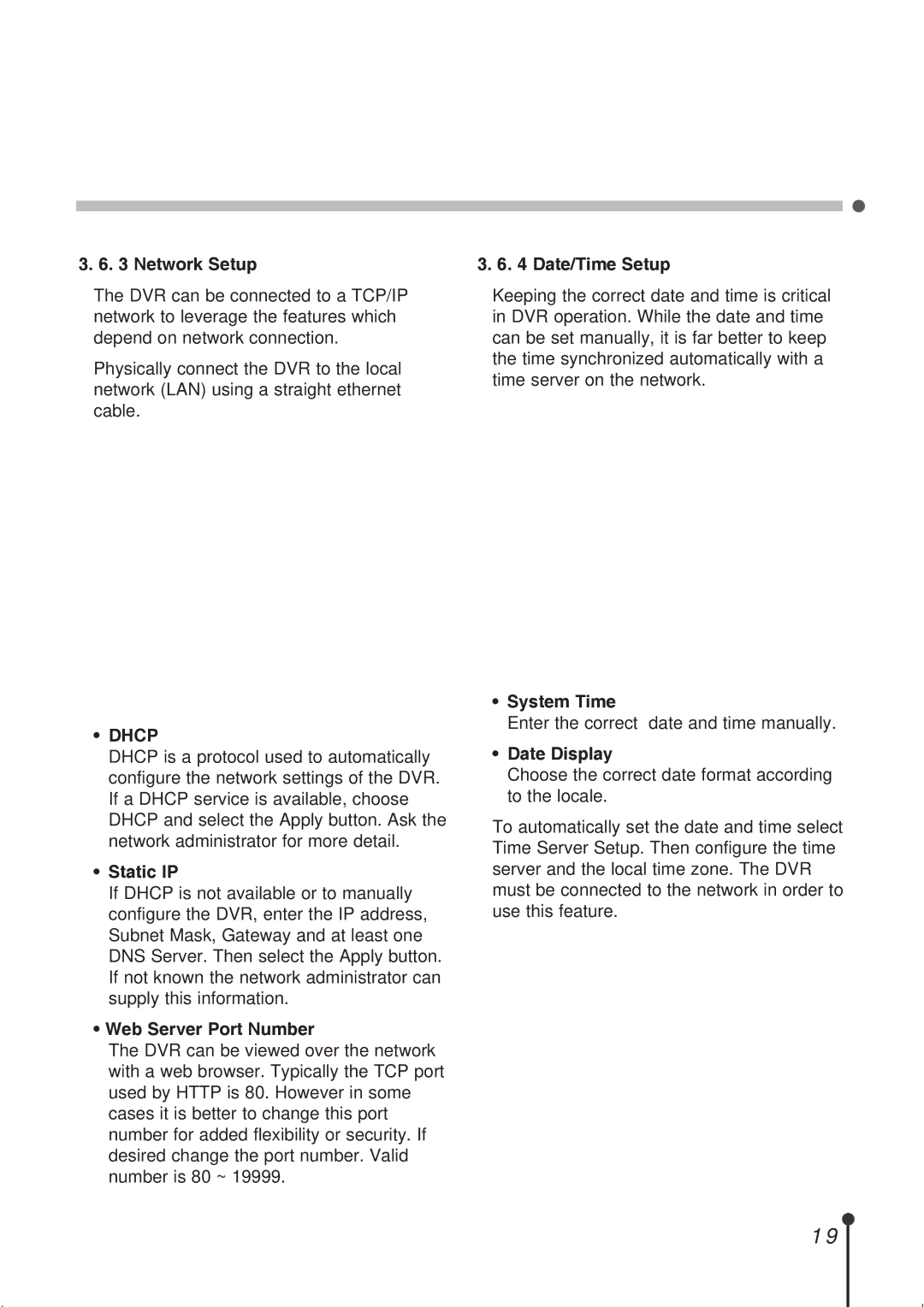
3. 6. 3 Network Setup
The DVR can be connected to a TCP/IP network to leverage the features which depend on network connection.
Physically connect the DVR to the local network (LAN) using a straight ethernet cable.
•DHCP
DHCP is a protocol used to automatically configure the network settings of the DVR. If a DHCP service is available, choose DHCP and select the Apply button. Ask the network administrator for more detail.
•Static IP
If DHCP is not available or to manually configure the DVR, enter the IP address, Subnet Mask, Gateway and at least one DNS Server. Then select the Apply button. If not known the network administrator can supply this information.
•Web Server Port Number
The DVR can be viewed over the network with a web browser. Typically the TCP port used by HTTP is 80. However in some cases it is better to change this port number for added flexibility or security. If desired change the port number. Valid number is 80 ~ 19999.
3. 6. 4 Date/Time Setup
Keeping the correct date and time is critical in DVR operation. While the date and time can be set manually, it is far better to keep the time synchronized automatically with a time server on the network.
•System Time
Enter the correct date and time manually.
•Date Display
Choose the correct date format according to the locale.
To automatically set the date and time select Time Server Setup. Then configure the time server and the local time zone. The DVR must be connected to the network in order to use this feature.
19
